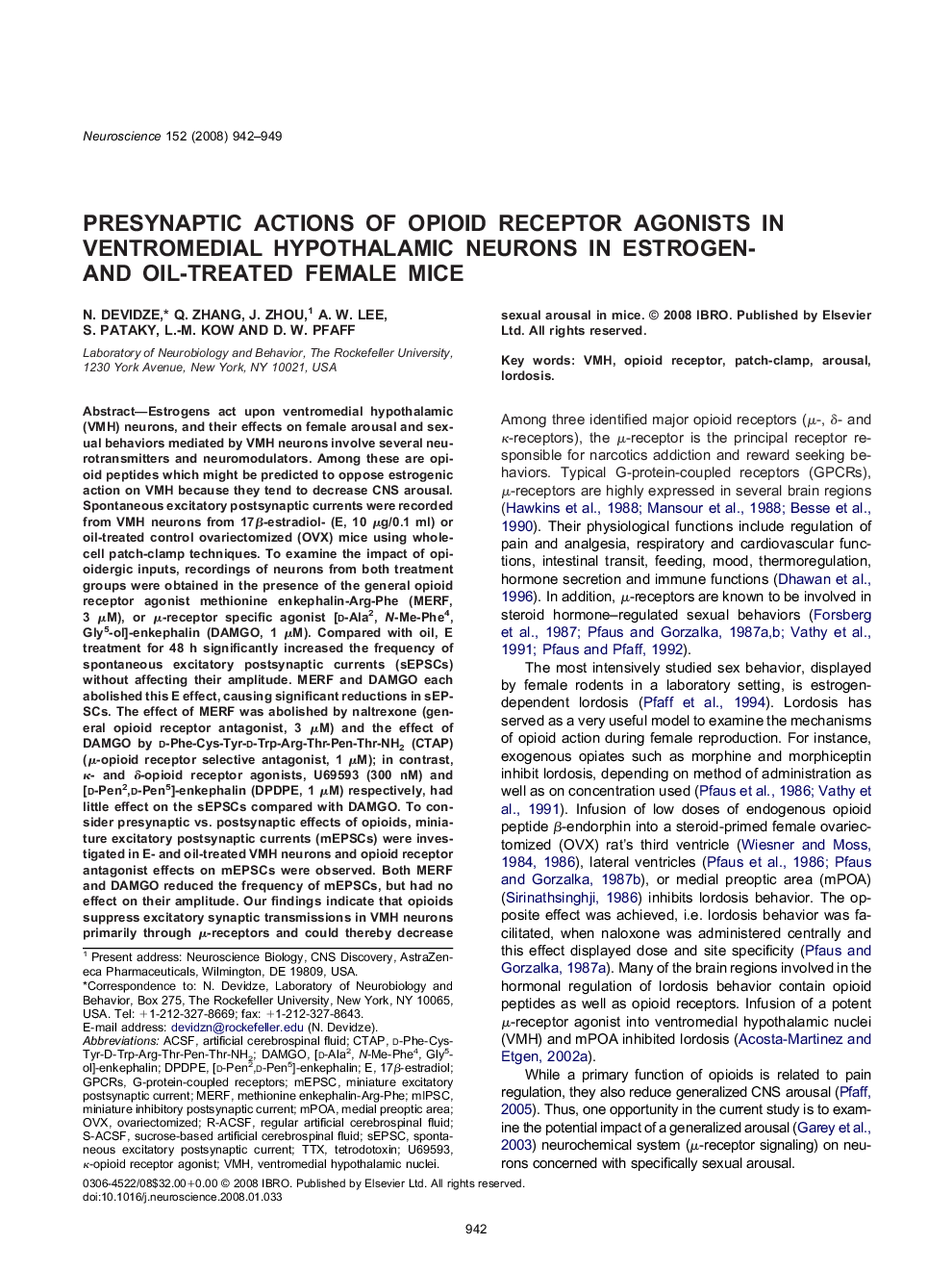| Article ID | Journal | Published Year | Pages | File Type |
|---|---|---|---|---|
| 6278245 | Neuroscience | 2008 | 8 Pages |
Estrogens act upon ventromedial hypothalamic (VMH) neurons, and their effects on female arousal and sexual behaviors mediated by VMH neurons involve several neurotransmitters and neuromodulators. Among these are opioid peptides which might be predicted to oppose estrogenic action on VMH because they tend to decrease CNS arousal. Spontaneous excitatory postsynaptic currents were recorded from VMH neurons from 17β-estradiol- (E, 10 μg/0.1 ml) or oil-treated control ovariectomized (OVX) mice using whole-cell patch-clamp techniques. To examine the impact of opioidergic inputs, recordings of neurons from both treatment groups were obtained in the presence of the general opioid receptor agonist methionine enkephalin-Arg-Phe (MERF, 3 μM), or μ-receptor specific agonist [d-Ala2, N-Me-Phe4, Gly5-ol]-enkephalin (DAMGO, 1 μM). Compared with oil, E treatment for 48 h significantly increased the frequency of spontaneous excitatory postsynaptic currents (sEPSCs) without affecting their amplitude. MERF and DAMGO each abolished this E effect, causing significant reductions in sEPSCs. The effect of MERF was abolished by naltrexone (general opioid receptor antagonist, 3 μM) and the effect of DAMGO by d-Phe-Cys-Tyr-d-Trp-Arg-Thr-Pen-Thr-NH2 (CTAP) (μ-opioid receptor selective antagonist, 1 μM); in contrast, κ- and δ-opioid receptor agonists, U69593 (300 nM) and [d-Pen2,d-Pen5]-enkephalin (DPDPE, 1 μM) respectively, had little effect on the sEPSCs compared with DAMGO. To consider presynaptic vs. postsynaptic effects of opioids, miniature excitatory postsynaptic currents (mEPSCs) were investigated in E- and oil-treated VMH neurons and opioid receptor antagonist effects on mEPSCs were observed. Both MERF and DAMGO reduced the frequency of mEPSCs, but had no effect on their amplitude. Our findings indicate that opioids suppress excitatory synaptic transmissions in VMH neurons primarily through μ-receptors and could thereby decrease sexual arousal in mice.
